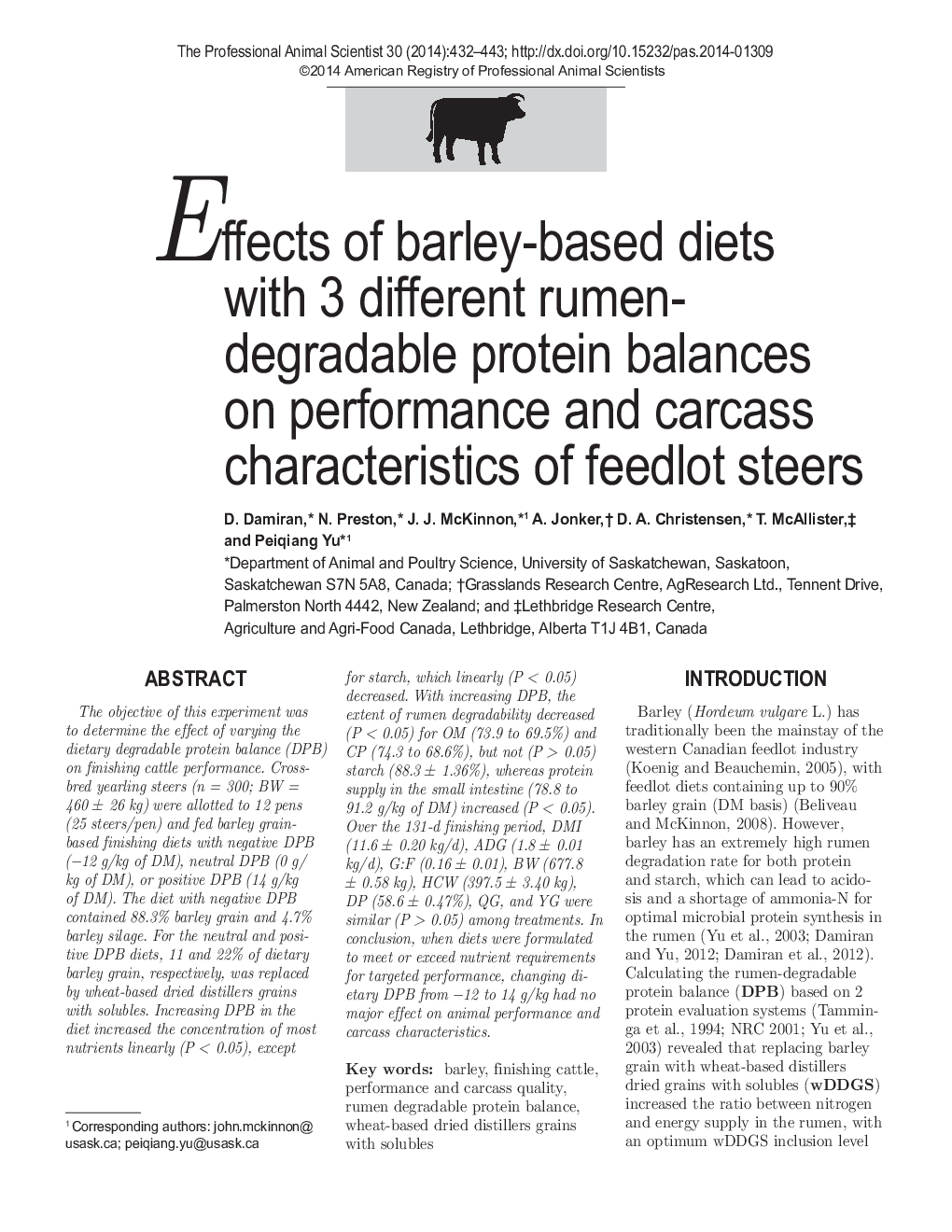| Article ID | Journal | Published Year | Pages | File Type |
|---|---|---|---|---|
| 2453867 | The Professional Animal Scientist | 2014 | 12 Pages |
Abstract
The objective of this experiment was to determine the effect of varying the dietary degradable protein balance (DPB) on finishing cattle performance. Crossbred yearling steers (n = 300; BW = 460 ± 26 kg) were allotted to 12 pens (25 steers/pen) and fed barley grain-based finishing diets with negative DPB (â 12 g/kg of DM), neutral DPB (0 g/ kg of DM), or positive DPB (14 g/kg of DM). The diet with negative DPB contained 88.3% barley grain and 4.7% barley silage. For the neutral and positive DPB diets, 11 and 22% of dietary barley grain, respectively, was replaced by wheat-based dried distillers grains with solubles. Increasing DPB in the diet increased the concentration of most nutrients linearly (P < 0.05), except for starch, which linearly (P < 0.05) decreased. With increasing DPB, the extent of rumen degradability decreased (P < 0.05) for OM (73.9 to 69.5%) and CP (74.3 to 68.6%), but not (P > 0.05) starch (88.3 ± 1.36%), whereas protein supply in the small intestine (78.8 to 91.2 g/kg of DM) increased (P < 0.05). Over the 131-d finishing period, DMI (11.6 ± 0.20 kg/d), ADG (1.8 ± 0.01 kg/d), G:F (0.16 ± 0.01), BW (677.8 ± 0.58 kg), HCW (397.5 ± 3.40 kg), DP (58.6 ± 0.47%), QG, and YG were similar (P > 0.05) among treatments. In conclusion, when diets were formulated to meet or exceed nutrient requirements for targeted performance, changing dietary DPB from â 12 to 14 g/kg had no major effect on animal performance and carcass characteristics.
Keywords
Related Topics
Life Sciences
Agricultural and Biological Sciences
Animal Science and Zoology
Authors
D. Damiran, N. Preston, J.J. McKinnon, A. Jonker, D.A. Christensen, T. McAllister, Peiqiang Yu,
